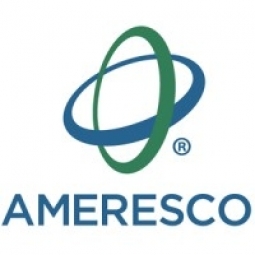Technology Category
- Functional Applications - Computerized Maintenance Management Systems (CMMS)
- Sensors - Utility Meters
Applicable Industries
- Buildings
- Healthcare & Hospitals
Applicable Functions
- Facility Management
- Maintenance
Use Cases
- Building Automation & Control
- Smart Campus
Services
- System Integration
About The Customer
Naples Community Hospital (NCH) Healthcare System is a non-profit healthcare provider that offers personalized care to over 40,500 patients annually. The system comprises two hospitals with a total of 716 beds. NCH is committed to providing high-quality healthcare services to its patients, but was facing challenges in managing rising energy costs, assessing equipment viability, and controlling humidity levels in their facilities. The high energy usage intensity (EUI) of their buildings was a significant concern, as it was higher than other hospitals in their peer group. This not only led to increased operational costs but also raised sustainability concerns.
The Challenge
Naples Community Hospital (NCH) Healthcare System, a non-profit healthcare provider, was grappling with escalating energy costs, equipment viability issues, and lack of control over humidity levels in their facilities. The healthcare provider, which offers personalized care to over 40,500 patients annually in a two-hospital, 716-bed system, was in dire need of a solution to these challenges. The energy usage intensity (EUI) for each of the buildings was significantly higher than other area hospitals in NCH’s peer group, indicating a higher consumption of energy. This not only led to increased costs but also raised concerns about the sustainability of their operations.
The Solution
NCH partnered with Ameresco’s Smart Building Solutions group to address these challenges. Ameresco conducted a comprehensive investment-grade energy audit for the two campuses, along with a central facility. The audit revealed opportunities for significant energy and operations and maintenance (O&M) savings. Based on the audit results, Ameresco developed a 5-year Energy Master Plan that prioritized and scheduled improvements alongside a Facilities Master Plan. Energy Conservation Measures (ECMs) were engineered to address the increased consumption and humidity issues. The solution involved updating lighting and boiler plants at both campuses, replacing chillers and cooling towers, and retro-commissioning at the downtown campus. The utility savings, operations and maintenance savings, rebates, incentives, and overall return on investment shaped ECM development.
Operational Impact
Quantitative Benefit

Case Study missing?
Start adding your own!
Register with your work email and create a new case study profile for your business.
Related Case Studies.

Case Study
Energy Saving & Power Monitoring System
Recently a university in Taiwan was experiencing dramatic power usage increases due to its growing number of campus buildings and students. Aiming to analyze their power consumption and increase their power efficiency across 52 buildings, the university wanted to build a power management system utilizing web-based hardware and software. With these goals in mind, they contacted Advantech to help them develop their system and provide them with the means to save energy in the years to come.

Case Study
Hospital Inventory Management
The hospital supply chain team is responsible for ensuring that the right medical supplies are readily available to clinicians when and where needed, and to do so in the most efficient manner possible. However, many of the systems and processes in use at the cancer center for supply chain management were not best suited to support these goals. Barcoding technology, a commonly used method for inventory management of medical supplies, is labor intensive, time consuming, does not provide real-time visibility into inventory levels and can be prone to error. Consequently, the lack of accurate and real-time visibility into inventory levels across multiple supply rooms in multiple hospital facilities creates additional inefficiency in the system causing over-ordering, hoarding, and wasted supplies. Other sources of waste and cost were also identified as candidates for improvement. Existing systems and processes did not provide adequate security for high-cost inventory within the hospital, which was another driver of cost. A lack of visibility into expiration dates for supplies resulted in supplies being wasted due to past expiry dates. Storage of supplies was also a key consideration given the location of the cancer center’s facilities in a dense urban setting, where space is always at a premium. In order to address the challenges outlined above, the hospital sought a solution that would provide real-time inventory information with high levels of accuracy, reduce the level of manual effort required and enable data driven decision making to ensure that the right supplies were readily available to clinicians in the right location at the right time.

Case Study
Intelligent Building Automation System and Energy Saving Solution
One of the most difficult problems facing the world is conserving energy in buildings. However, it is not easy to have a cost-effective solution to reduce energy usage in a building. One solution for saving energy is to implement an intelligent building automation system (BAS) which can be controlled according to its schedule. In Indonesia a large university with a five floor building and 22 classrooms wanted to save the amount of energy being used.

Case Study
Powering Smart Home Automation solutions with IoT for Energy conservation
Many industry leaders that offer Smart Energy Management products & solutions face challenges including:How to build a scalable platform that can automatically scale-up to on-board ‘n’ number of Smart home devicesData security, solution availability, and reliability are the other critical factors to deal withHow to create a robust common IoT platform that handles any kind of smart devicesHow to enable data management capabilities that would help in intelligent decision-making

Case Study
Gas Pipeline Monitoring System for Hospitals
This system integrator focuses on providing centralized gas pipeline monitoring systems for hospitals. The service they provide makes it possible for hospitals to reduce both maintenance and labor costs. Since hospitals may not have an existing network suitable for this type of system, GPRS communication provides an easy and ready-to-use solution for remote, distributed monitoring systems System Requirements - GPRS communication - Seamless connection with SCADA software - Simple, front-end control capability - Expandable I/O channels - Combine AI, DI, and DO channels




